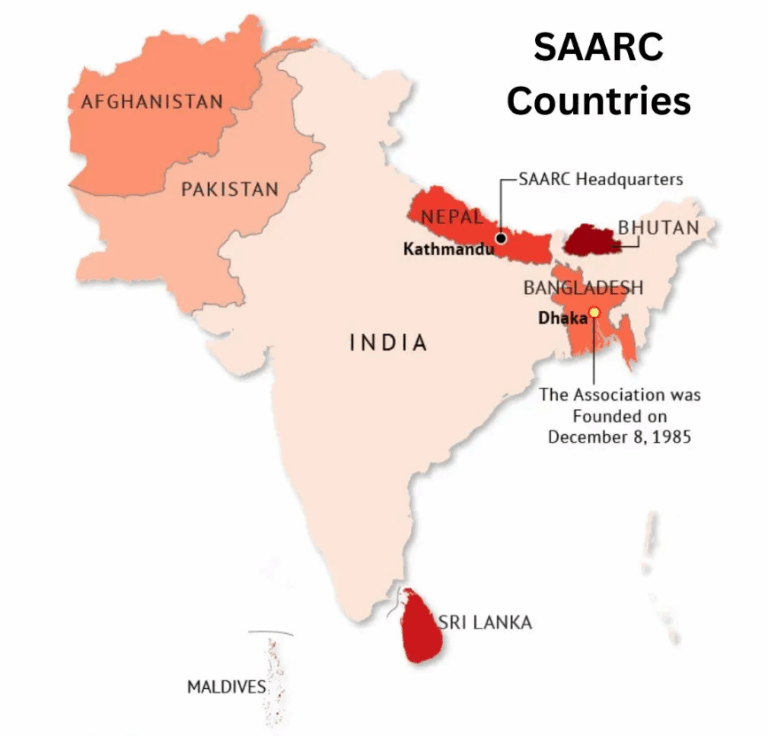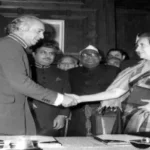UK-India Free Trade Agreement
India and the UK signed a Free Trade Agreement (FTA) after nearly three years of negotiations. The agreement reduces tariffs on 90% of goods.
- India and the UK signed a Free Trade Agreement (FTA) after nearly three years of negotiations. The agreement reduces tariffs on 90% of goods.
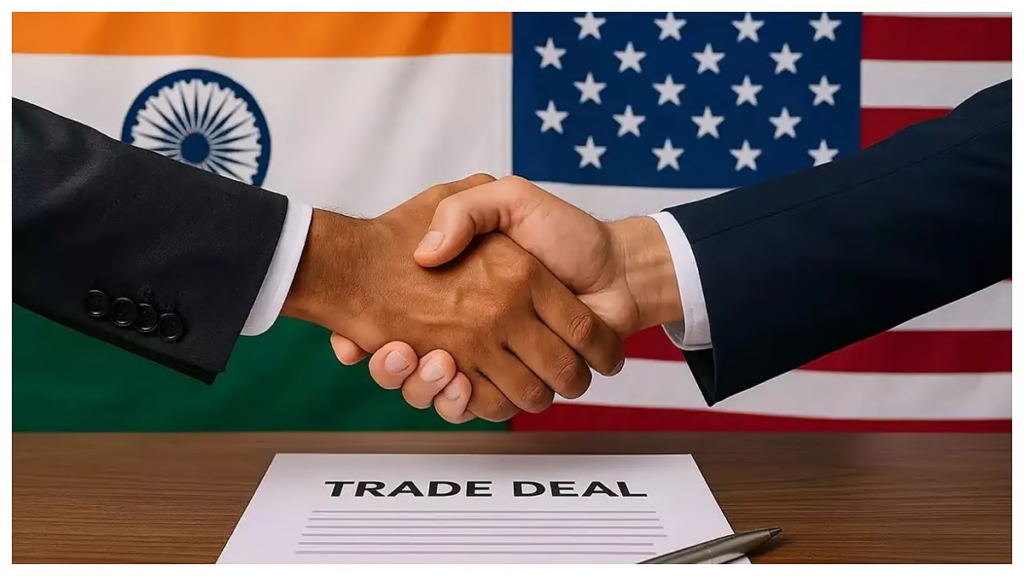
- The deal aims to boost trade, investment, job creation, and innovation. It comes at a time of global trade uncertainty and marks a major economic collaboration between the world’s fifth and sixth largest economies.
About the UK-India Trade Deal
- Trade Expansion: The deal is projected to increase annual bilateral trade by £25.5 billion from 2040 onward.
- In 2024, UK-India trade stood at £42.6 billion, with UK exports at £17.1 billion and imports from India at £25.5 billion.
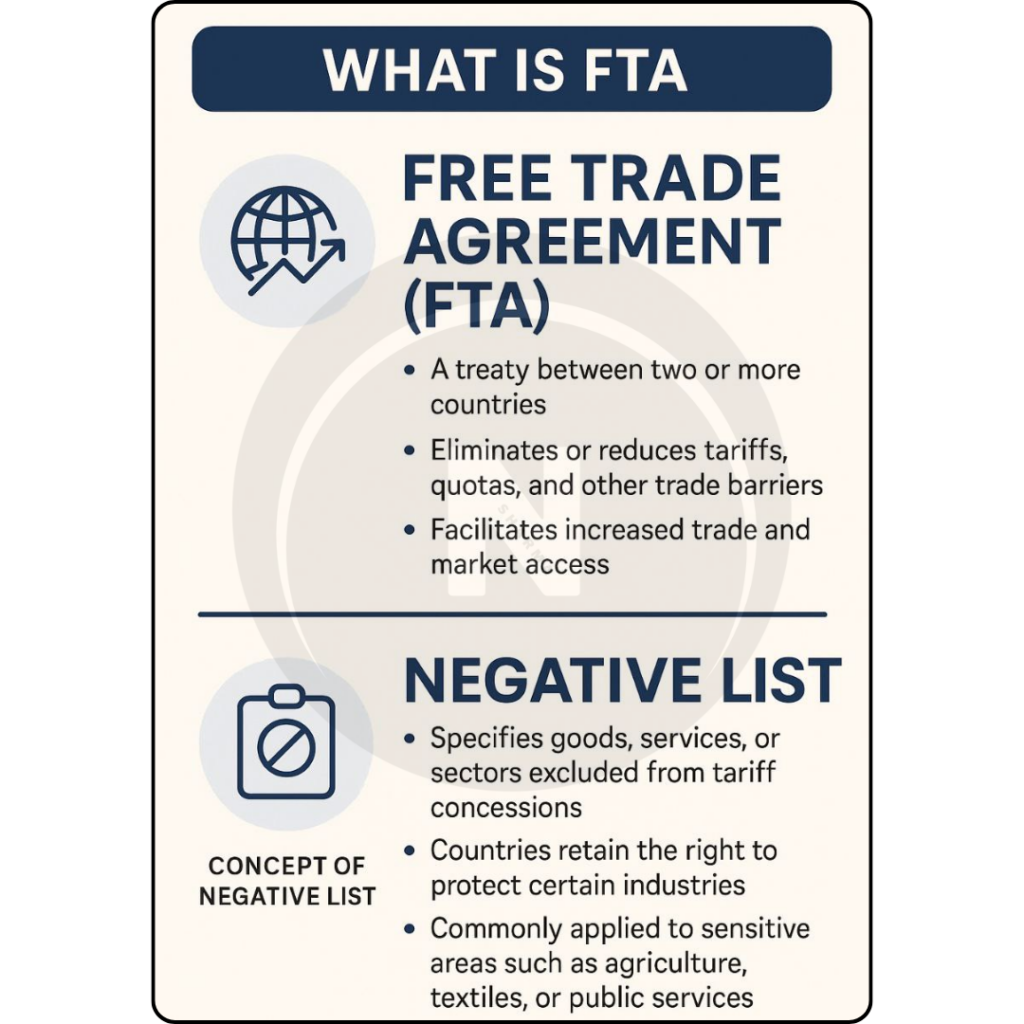
India’s Gains
- 99% of Indian exports to the UK will enjoy zero-duty access.
- Boost for labour-intensive sectors: textiles, marine products, leather, footwear, sports goods, toys, gems & jewellery, engineering goods, auto parts, and organic chemicals.
- UK’s Gains: India to slash duties on 90% of tariff lines, with 85% becoming fully tariff-free within 10 years.
- Lower Indian tariffs on whisky, medical devices, advanced machinery, and lamb to make UK exports more competitive.
Major Sectors Benefitting
- Alcohol: Tariffs on whisky and gin will drop from 150% to 75% initially, reaching 40% by the tenth year, boosting the UK’s Scotch whisky exports.
- Automobiles: India will cut auto import tariffs to 10% under a quota system (down from over 100%).
- Other Goods: Reduced tariffs for British exports such as cosmetics, aerospace components, lamb, medical devices, salmon, electrical machinery, soft drinks, chocolate, and biscuits.
Services and Workforce Mobility:
- The deal includes increased quotas for Indian workers to take up employment in specific sectors in the UK, enhancing labour mobility and service trade cooperation.
- Indian workers in the UK will receive a three-year exemption from social security payments, reducing financial burden and improving mobility opportunities
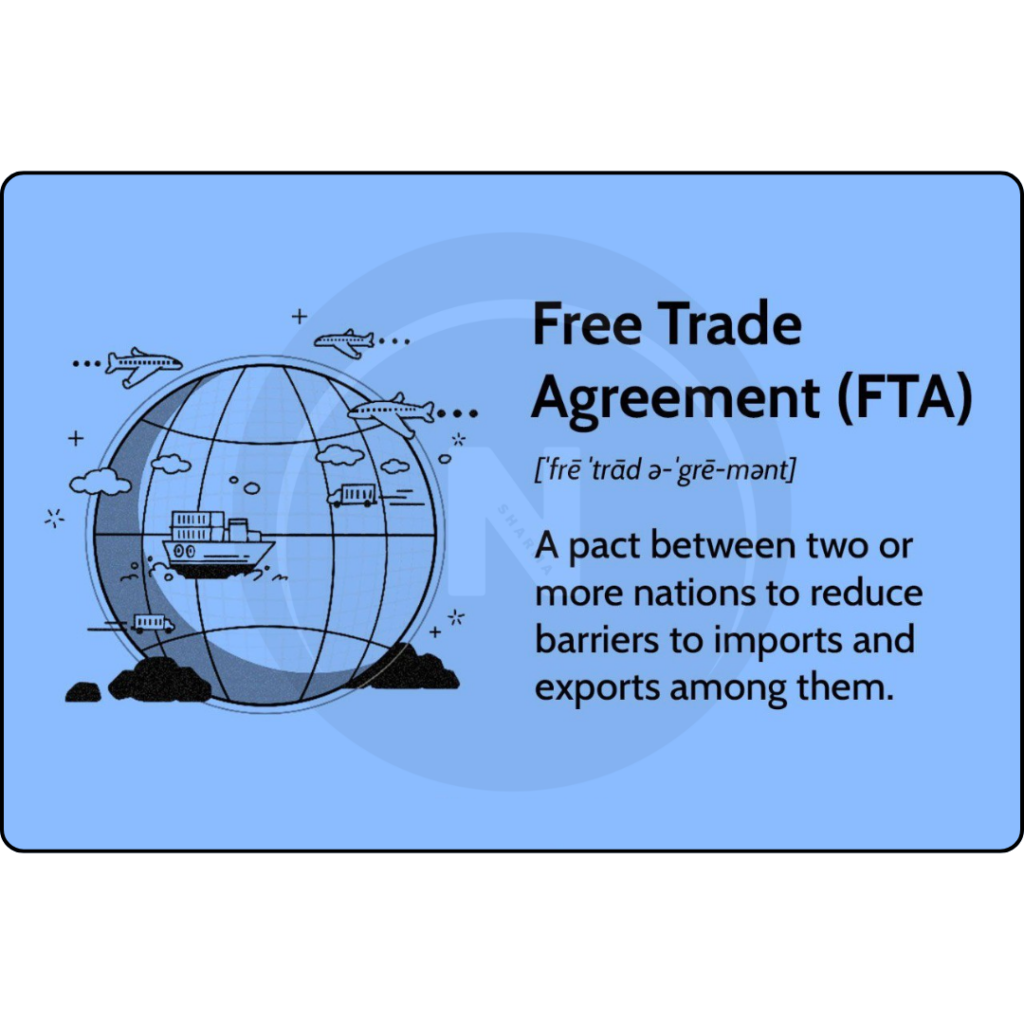
Reasons Behind the Push for the Deal
- Supply Chain Disruptions & China Diversification:
- The COVID-19 pandemic exposed the vulnerabilities of global supply chains overly reliant on China.
Western countries, including the UK, sought to implement a ‘China-plus one’ strategy—diversifying supply chains by partnering with countries like India.
Post-Brexit Market Realignment
- After Brexit, the UK lost access to the EU’s Single Market.
- India, with its large and growing consumer base, emerged as a critical alternative to offset this economic gap.
Economic Pressures in the UK
- The UK has been grappling with a cost-of-living crisis.
- The FTA is viewed as a timely economic boost and a political win for PM Keir Starmer, who assumed office in July 2024.
India’s Shift from RCEP
- In 2019, India opted out of the China-led Regional Comprehensive Economic Partnership (RCEP), increasing the urgency to find alternative trade alliances like the UK.
Key Issues During Negotiations
Limited Trade Gains for India
- According to the Global Trade Research Initiative (GTRI), many Indian exports already benefit from low or zero tariffs in the UK, so the FTA’s impact on trade volume may be limited.
Services and Work Visas
- India prioritised better access for its service professionals, particularly in IT and healthcare.
- However, immigration remains a sensitive issue for the UK post-Brexit.
- Eventually, only about 100 new work visas per year for Indian professionals were agreed upon.
Carbon Tax Disput
- The UK’s proposal to impose a carbon tax on metal imports (based on emissions) raised concerns for Indian exporters, particularly in steel and aluminium.
- Negotiations were needed to address the potential impact on India’s competitiveness.
Beyond Trade
- The FTA is seen as a foundation for deeper cooperation in sectors such as: Defence and security; Critical technologies; Education; Tourism and Indian diaspora engagement.
- An Indian official aptly remarked: “The FTA is the floor, not the ceiling.”
PRELIMS PRACTICE QUESTIONS:
Question : Which of the following statements regarding the India-UK Free Trade Agreement (FTA) signed in 2024 is/are correct?
- The FTA grants zero-duty access to 99% of Indian exports to the UK, significantly benefitting labour-intensive sectors such as textiles and gems & jewellery.
- Under the agreement, the UK will immediately provide 100,000 work visas annually to Indian IT and healthcare professionals.
- The FTA includes a phased reduction in India’s tariffs on Scotch whisky from 150% to 40% over a period of ten years.
- The UK’s proposed carbon tax on high-emission imports like steel was fully accepted by India as part of the FTA.
Select the correct answer using the code below:
A. 1 and 3 only
B. 1, 2 and 4 only
C. 2 and 3 only
D. 1, 3 and 4 only
Answer: A. 1 and 3 only
Explanation:
- Statement 1 is correct: 99% of Indian exports to the UK get zero-duty access, aiding labour-intensive sectors.
- Statement 2 is incorrect: Only ~100 new work visas per year were agreed upon, not 100,000.
- Statement 3 is correct: Tariffs on Scotch whisky will reduce from 150% to 40% over ten years.
- Statement 4 is incorrect: India raised concerns about the carbon tax; it wasn’t fully accepted.


